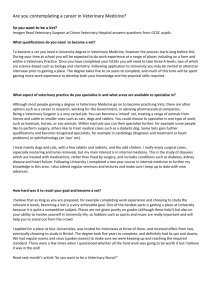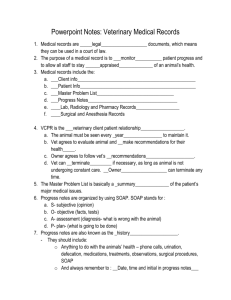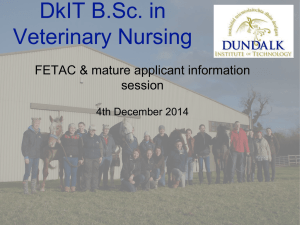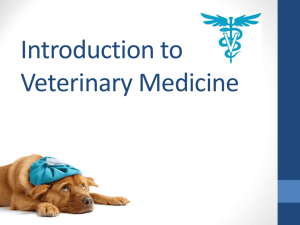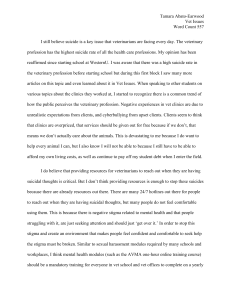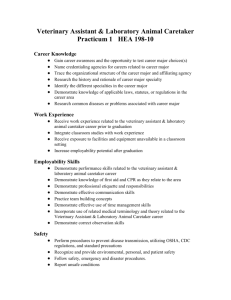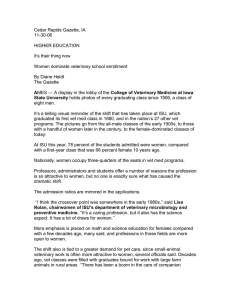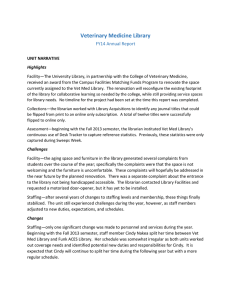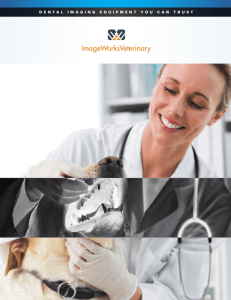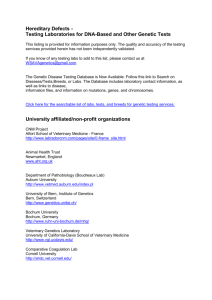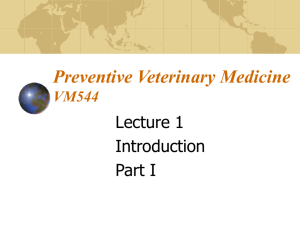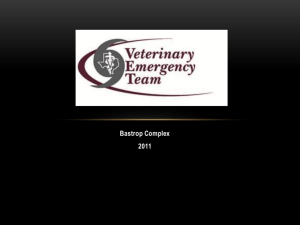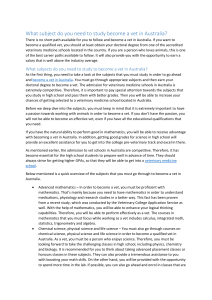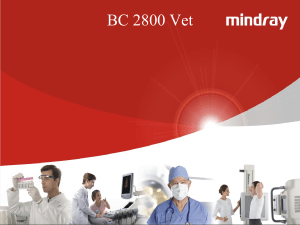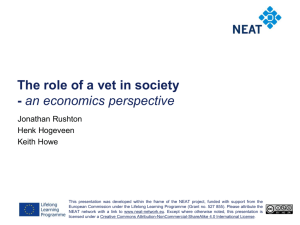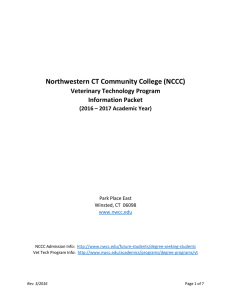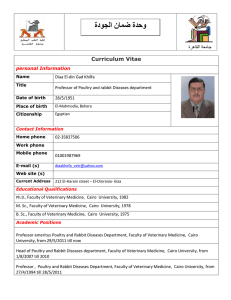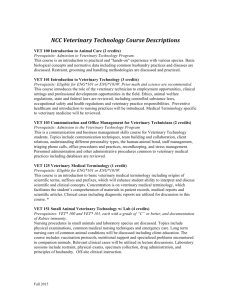Vet Science Outline
advertisement
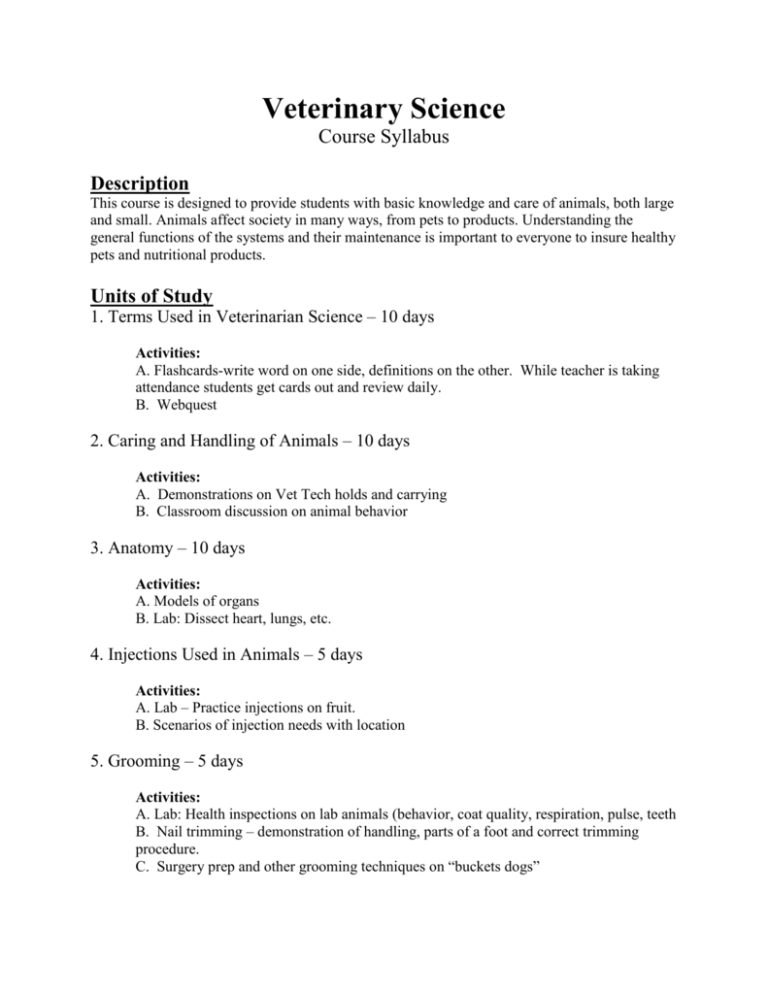
Veterinary Science Course Syllabus Description This course is designed to provide students with basic knowledge and care of animals, both large and small. Animals affect society in many ways, from pets to products. Understanding the general functions of the systems and their maintenance is important to everyone to insure healthy pets and nutritional products. Units of Study 1. Terms Used in Veterinarian Science – 10 days Activities: A. Flashcards-write word on one side, definitions on the other. While teacher is taking attendance students get cards out and review daily. B. Webquest 2. Caring and Handling of Animals – 10 days Activities: A. Demonstrations on Vet Tech holds and carrying B. Classroom discussion on animal behavior 3. Anatomy – 10 days Activities: A. Models of organs B. Lab: Dissect heart, lungs, etc. 4. Injections Used in Animals – 5 days Activities: A. Lab – Practice injections on fruit. B. Scenarios of injection needs with location 5. Grooming – 5 days Activities: A. Lab: Health inspections on lab animals (behavior, coat quality, respiration, pulse, teeth B. Nail trimming – demonstration of handling, parts of a foot and correct trimming procedure. C. Surgery prep and other grooming techniques on “buckets dogs” 6. Tools – 10 days Activities: A. Tools test – Video and discussion of tools used in vet science followed by a test. B. Flashcards – identify the tool and use. 7. Sutures – 10 days Activities: A. Create nine different suture patterns on a fabric base. B. Evaluated by use of a rubric on quality which will be completed by other students. C. Test their skills on old lab animals from the Biology Department. 8. I.V. Use – 5 days Activities: A. Live demonstrations of I.V .injection B. Veterinary surgery demonstration at local office 9. Diseases – 15 days Activities: A. Disease Brochure created on a variety of diseases and displayed prominently in the local library and Vet clinic. B. Veterinary call scenarios using diagnosis skills to assist callers with pet problems. 10. Nutrition in Ruminants and Non-Ruminants – 10 days Activities: A. Basic Nutrients Report given on the function, deficiency symptoms and sources B Digestion Lab – Students create a functional rumen model. C. Rabbit Ration lab - Using the Pearson Square method the students develop a two week ration lab and compare results of their experiment with classmates. D. Product Labeling – The students research and create and manufacture their own product and to market their product with correct labeling requirements. Grading Students will receive points for daily effort, assignments, quizzes, labs, tests, projects, and reports. A B C D F 92 – 100% 83 – 91% 74 – 82% 65 – 73% below 65%

